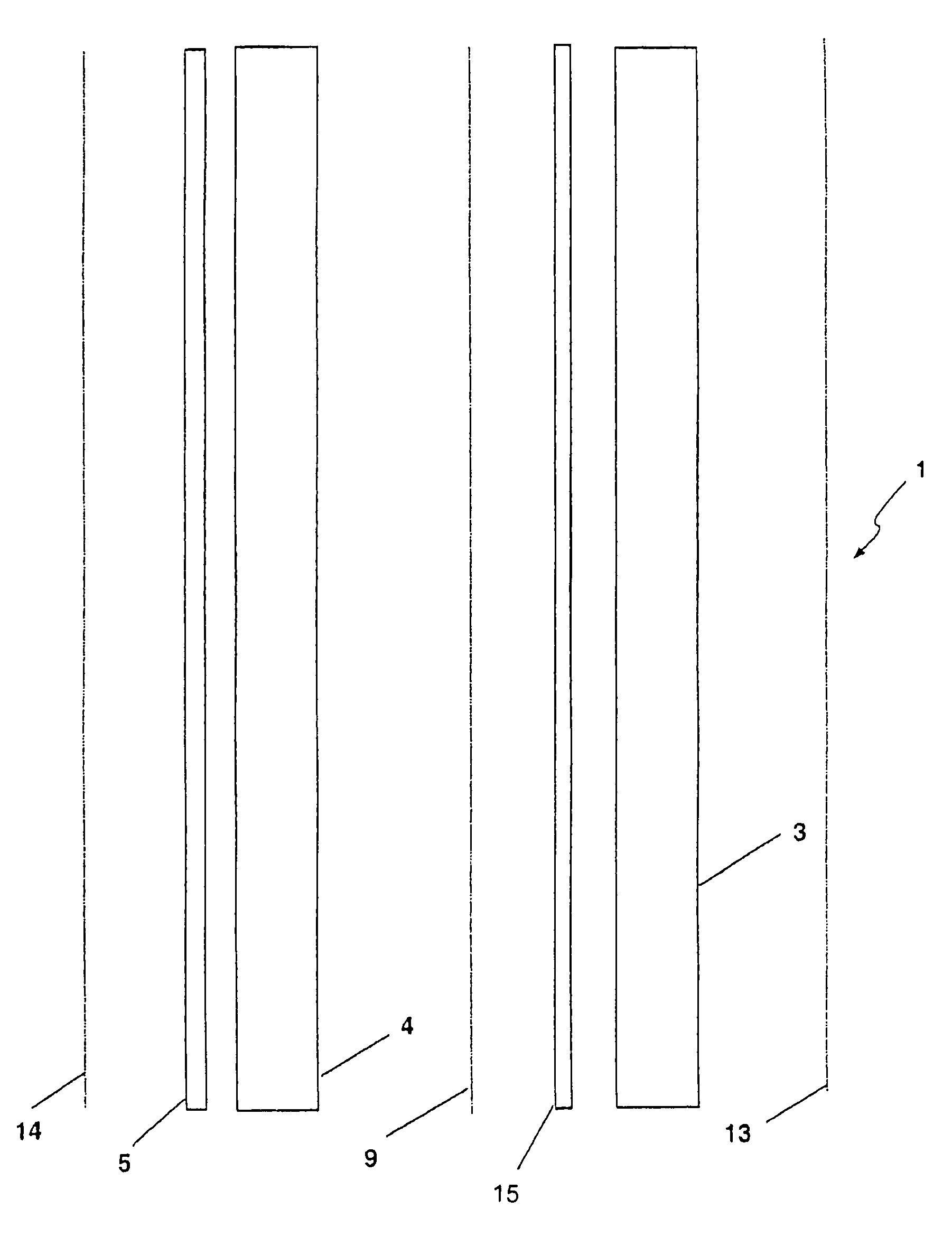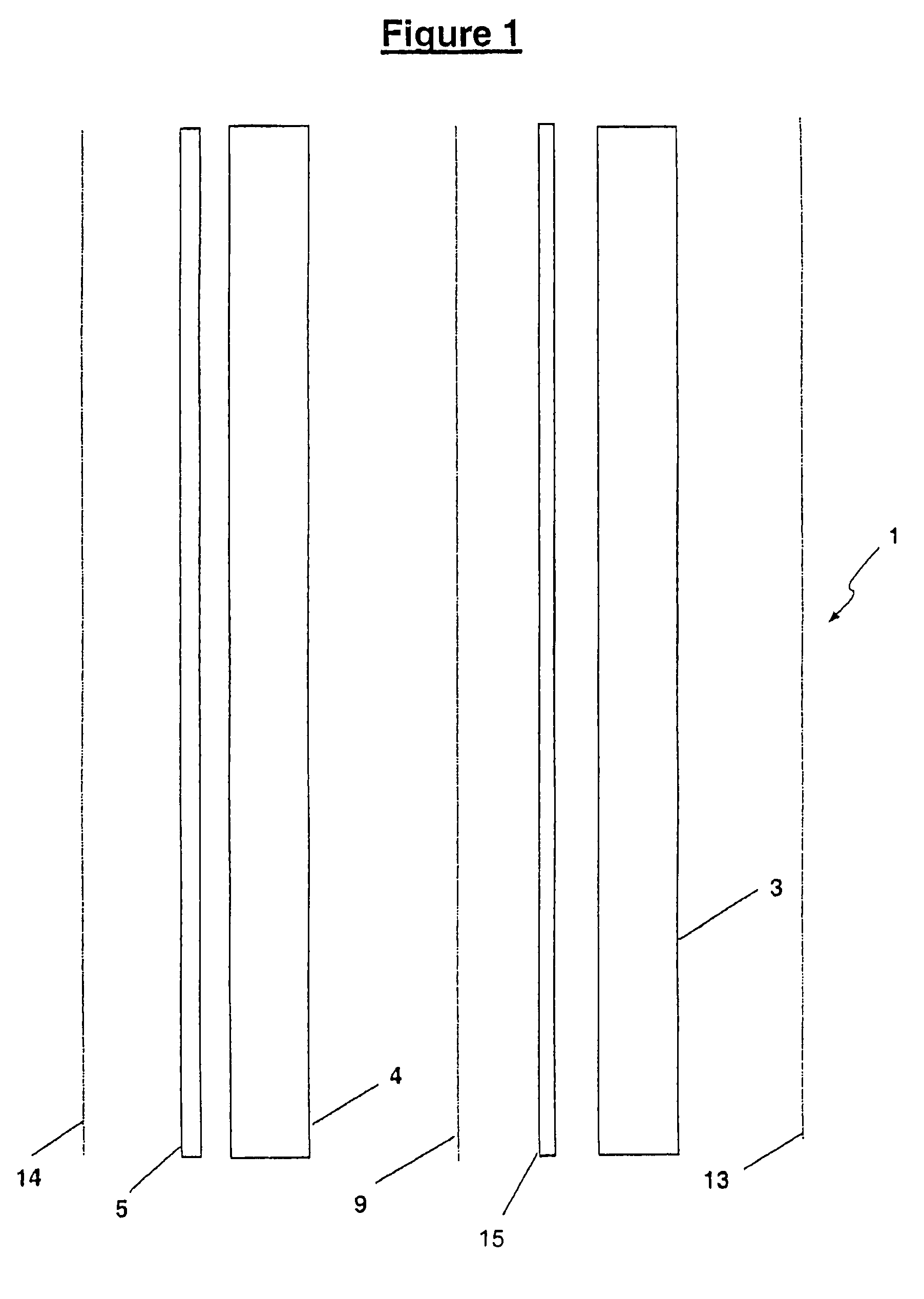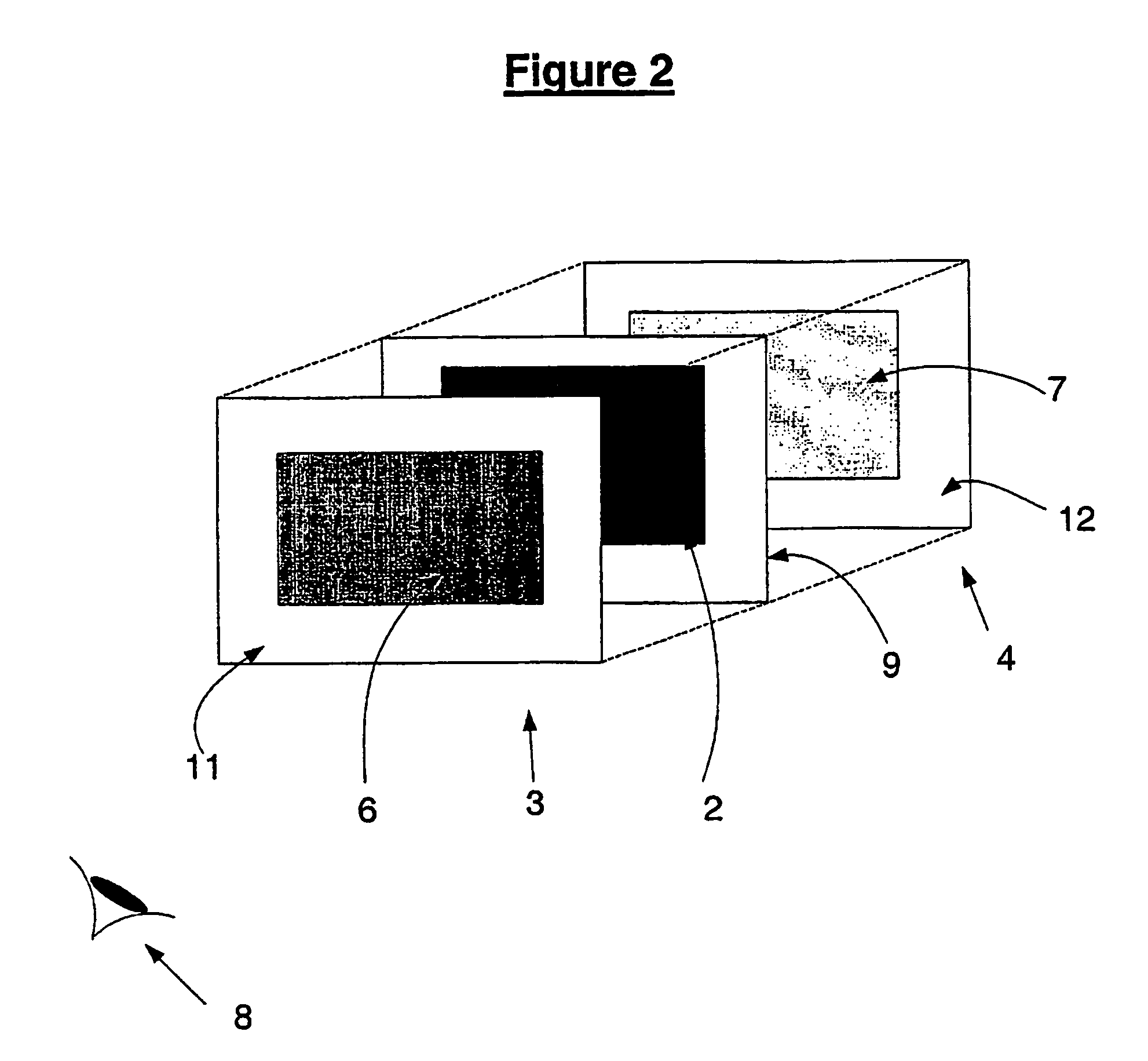Depth fused display
a display and depth technology, applied in the field of depth display, can solve the problems of rapid detection by preattentive processing, timeframe is insufficient for a human to consciously decide, and research shows that these may not be detected preattentively, so as to reduce the effect of parallax, enhance the viewing angle of the display, and enhance the display's usability
- Summary
- Abstract
- Description
- Claims
- Application Information
AI Technical Summary
Benefits of technology
Problems solved by technology
Method used
Image
Examples
Embodiment Construction
[0089]The FIGS. 1-4 illustrate preferred embodiments of the present invention in which a display (1) capable of displaying a variable depth image (2) is composed of a plurality of transparent imaging screens in the form of LCD screens (3), parallel to, but spaced apart from each other and to a rear display screen (4) provided with a backlight (5). It should be apparent to one skilled in the art that a number of alternative display technologies may be utilised in place of the LCD screens. Furthermore, although FIG. 1 shows a single screen (3) in front of the rear display (4) for the sake of clarity and convenience, any number of additional (at least partially transparent) imaging screens (3) may be incorporated. Such displays provide a three dimensional quality the scene viewed by an observer, as described in the applicants co-pending patents PCT No. PCT / NZ98 / 00098 and PCT / NZ99 / 00021, incorporated by reference herein.
[0090]Although, as previously stated, the present invention is not ...
PUM
| Property | Measurement | Unit |
|---|---|---|
| threshold time | aaaaa | aaaaa |
| response time | aaaaa | aaaaa |
| luminance | aaaaa | aaaaa |
Abstract
Description
Claims
Application Information
 Login to View More
Login to View More - R&D
- Intellectual Property
- Life Sciences
- Materials
- Tech Scout
- Unparalleled Data Quality
- Higher Quality Content
- 60% Fewer Hallucinations
Browse by: Latest US Patents, China's latest patents, Technical Efficacy Thesaurus, Application Domain, Technology Topic, Popular Technical Reports.
© 2025 PatSnap. All rights reserved.Legal|Privacy policy|Modern Slavery Act Transparency Statement|Sitemap|About US| Contact US: help@patsnap.com



